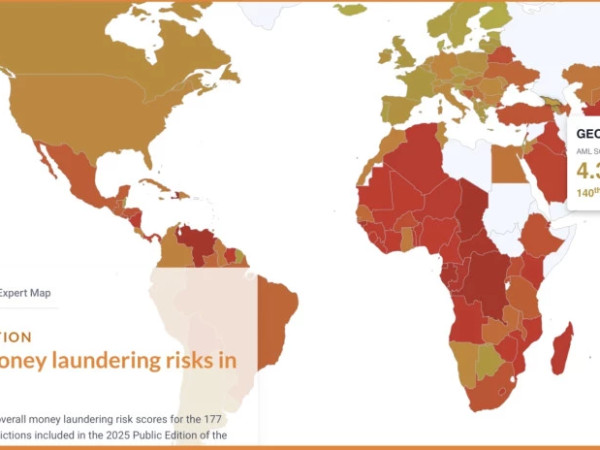On 19 February 2025 Forbes Georgia published an article, a significant part of which refers to the real estate owned by Ucha Mamatsashvili'sfamily.
Regarding the aforementioned article, Ucha Mamatsashvili's attorney,Amiran Giguashvili, put out a statement, which we quote in full:
“Taking into account the public interest and high civil responsibility of my client, we feel obliged to make a number of explanations regarding the politically biased and misleading information published by Georgian edition of Forbes magazine on 19 February 2025.
There is every indication of the journalist’s attempt to present absolutely standard legal procedures related to real estate and obtaining a construction permit as a different/special attitude towards UchaMamatsashvili's family by the relevant authorities during administrative proceedings. Based on the above, we felt it necessary to clarify a number of issues raised in the article to the public:
- Ucha Mamatsashvili's brother, Archil Mamatsashvili, has been owning two of 10 land plots mentioned in the article (1,000 square meters and 1,000 square meters) in Bagebi forest district in Tbilisi since the 1990s. The aforementioned plots have been registered in the Public Registry in the name of Archil Mamatsashvili since 2008. The purchase of two more land plots (437 square meters and 542 square meters) mentioned in the article in 2018 actually took place through an auction. One of these plots was located between two plots owned by ArchilMamatsashvili and the other was adjacent to the same plots. The journalist emphasizes the low sale price of the plots and the inadmissibility of other entities to participate in the auction as a privilege for Archil Mamatsashvili, although this does not correspond to reality, as the prices at the auction were set taking into account the specifics of particular land plots. It is noteworthy that based on the configuration and area of the plots, the City Hall itself has set a restriction prohibiting construction with such configuration. Hence, it goes without saying that with the exception of Archil, who could join the plots he bought to his own plots, it was unprofitable for other persons to buy these plots and participate in the auction process.
- We would like to emphasize that Archil Mamatsashvili donated 4 plots owned by him out of 10 land plots mentioned in the article to his brother, while the remaining 6 plots were purchased by Lela Mamatsashvili from other owners at appropriate market prices (the contracts were registered with the Public Registry and are available to all interested parties).
- In the article, the journalist describes an absolutely standard procedure for changing the intended purpose and merging land plots. In order for the owner to obtain a construction permit, the land plots had to be merged, in turn, in order to join, it was necessary for all 10 plots to have the same intended purpose. As for the removal of the restriction registered by the City Hall, it is natural that the restriction would have been removed as the plots purchased at the auction, which were subject to the restriction, were merged with other plots and their configuration was changed.
- Regarding the issue of a construction permit, the permit was issued in full compliance with the legislation. On the one hand, the journalist indicates that the procedure for obtaining the conditions of use for construction by the owner began in summer of 2023, and on the other hand, he/she also writes about the issuance of the permit within 2 months. We would like to clarify to the public that the issuance of a construction permit includes two stages: the first stage is the determination of the conditions of use of land plots for construction, the second stage is the approval of the project and the permit issuance. In this case, the Architecture Service of Tbilisi City Hall started the process of establishing the conditions for the use of land plots for construction on 21 August 2023 and the final approval of the conditions took place on 10 April 2024, in the process of which there were repeated establishment of intermediate results and delay in the preparation of an approval. The design approval and permitting phase began on 22 April 2024, and interim responses were received twice during this process, and the final construction permit was issued on 17 June 2024. In reality, the construction permit process took up to 10 months, not 2 months as indicated by the journalist. The above information is public and any interested person can access it on the website of the Architecture Service: tas.ge.
In addition to the above-mentioned facts, the distorted presentation of which and their interpretation in a political context, in our opinion, should be completely unacceptable for a publication like Forbes magazine and its Georgian version, we would like to draw public attention to the one-sided coverage of the issue and unethical behaviorof the journalist. Although the journalist in the article state that he/shecontacted the representative of Mr. Ucha Mamatsashvili during the preparation of the story, despite our request, the Chief Editor of the magazine Mr. Shota Digmelashvili did not provide information reflecting such communication, as well as confirmation that the journalist Anita Muskaria, who is actually indicated as the author of the article, does not exist and it is a fictitious name. Moreover, after we contacted the editor of the magazine, Mr. Shota Digmelashvili, the part of the article stating that the journalist had been in contact with the representative of Mr. Ucha Mamatsashvili during its preparation has completely disappeared.
We should separately note the structure and design of the article, where a close-up photo of Mr. Bidzina Ivanishvili is presented to attract the reader's attention and the discussion of the influence of the Ivanishvili family and his relatives at the level of a political libel, which makes it clear that the target of this so-called journalistic investigation was not the issue of land plots acquired by the family of Mr. UchiMamatsashvili in a completely legal way, but the journalist (whose name and surname turned out to be fictitious, as well as most of the facts presented in the article) was guided by the agenda of specific opposition parties.
These circumstances and the slant of the article, imbued with political speculation, clearly confirm its non-seriousness, which the public is likely to judge for itself. However, since the mentioned information is aimed at discrediting my client and does not comply with elementary journalistic norms, we require the publishing house to recognize the misinformative nature of the published article and make a rebuttal in accordance with the procedure established by law.


















